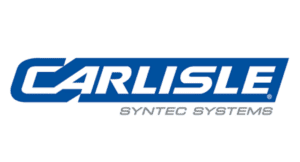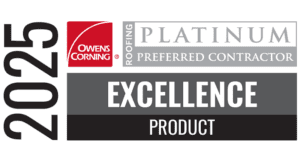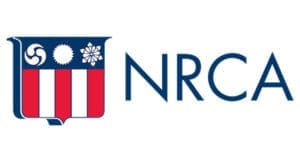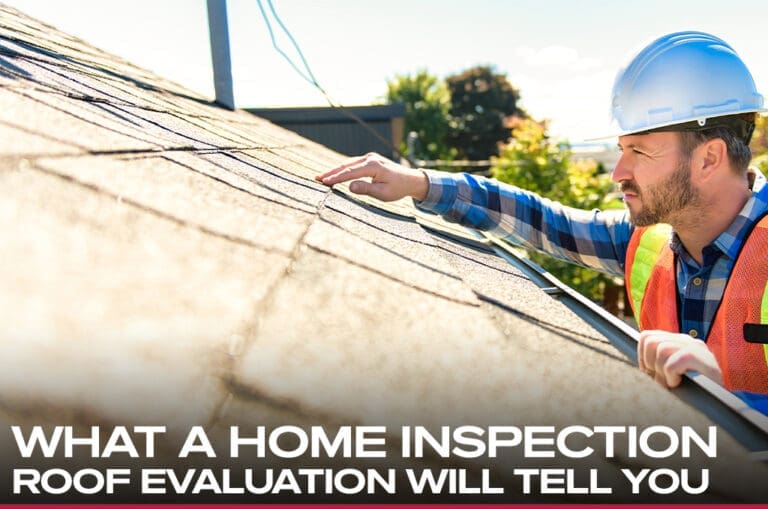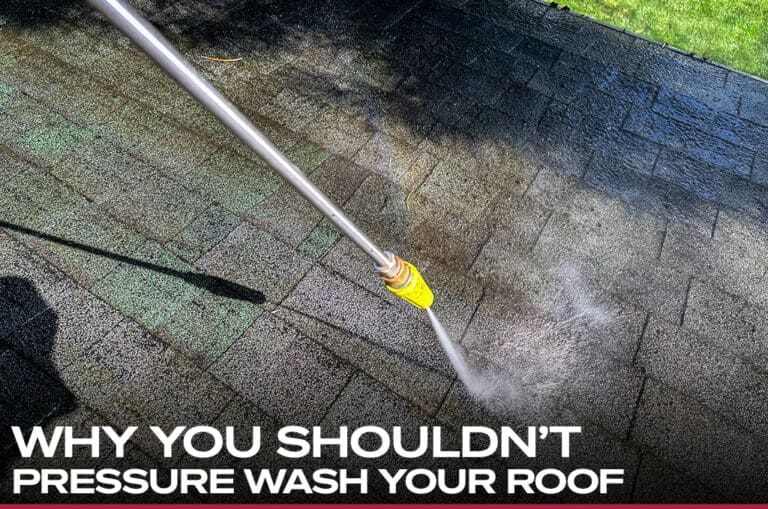Rafters vs Trusses: Which is Best for Your New Home?
When it comes to building a home, one of the critical decisions you’ll face is choosing the right roof structure: rafters vs trusses. Each has its own advantages and disadvantages, and the choice you make can significantly impact your construction process, budget, and the overall durability of your home. In this article, we discuss the differences between rafters and trusses, helping you make an informed decision for your home-building project.
Option 1: Rafters
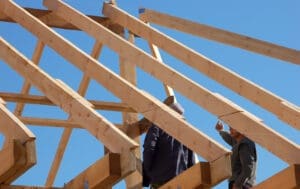
Custom-Build Rafters
Rafters are the traditional method of roof construction, consisting of sloped beams that run from the ridge of the roof to the eaves. They are typically made of wood and are installed on-site during the construction process. Rafters are often used in custom homes where flexibility and unique roof designs are desired.
Advantages of Rafters:
1. Customization: Rafters offer greater design flexibility, allowing for complex and unique roof shapes. This is ideal for custom homes or renovations where specific architectural details are required.
2. Attic Space: Rafters create an open space under the roof, which can be used for storage or converted into living space.
3. On-Site Construction: Since rafters are built on-site, they can be adjusted and modified as needed during the construction process, providing a higher degree of control.
Disadvantages of Rafters:
1. Labor-Intensive: The construction of rafters is labor-intensive and time-consuming, requiring skilled carpenters and precise measurements.
2. Cost: Due to the labor and time involved, rafters can be more expensive than trusses.
3. Structural Support: Rafters require additional structural support, such as load-bearing walls, which can limit interior design options.
Option 2: Trusses
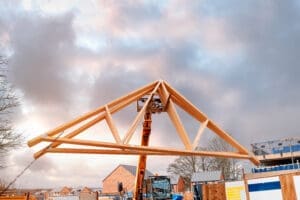
Installing Pre-Fabricated Trusses
Trusses are pre-fabricated roof structures made from a combination of wood and metal connectors. They are manufactured off-site and delivered to the construction site ready for installation. Trusses consist of triangular units that distribute weight evenly, providing strong and stable support for the roof.
Advantages of Trusses:
1. Cost-Effective: Trusses are generally more cost-effective than rafters due to their pre-fabrication and efficient use of materials.
2. Time-saving: Since trusses are manufactured off-site, they can be installed quickly, reducing construction time and labor costs.
3. Structural Integrity: The triangular design of trusses provides excellent structural integrity and weight distribution, reducing the need for additional support.
4. Versatility: Trusses can span large distances without the need for interior load-bearing walls, allowing for more open floor plans and flexible interior design.
Disadvantages of Trusses:
1. Limited Customization: Trusses are pre-designed and may not offer the same level of customization as rafters. This can be a drawback for complex or unique roof designs.
2. Transportation and Handling: Trusses are large and bulky, requiring careful transportation and handling to avoid damage.
3. Attic Space: Trusses typically create a web of internal supports, which can limit the usable attic space compared to rafters.
Key Considerations for Your Project
When deciding between rafters vs trusses, consider the following factors:
1. Design Requirements: If your home design includes unique roof shapes or requires specific architectural details, rafters may be the better choice. For more straightforward designs, trusses can provide a cost-effective and efficient solution.
2. Budget: Trusses are generally more affordable due to reduced labor and material costs. If budget constraints are a primary concern, trusses may be the way to go.
3. Construction Timeline: Trusses offer a quicker installation process, which can significantly shorten your construction timeline. This is beneficial if you’re working on a tight schedule.
4. Space Utilization: If you need additional attic space for storage or living areas, rafters provide more open space under the roof. However, if open floor plans and fewer interior load-bearing walls are essential, trusses offer better versatility.
Pressure Point Roofing is Your Trusted Roofing Solution for Any Style of Roof
Both rafters and trusses have their own set of advantages and disadvantages, and the right choice depends on your specific needs and priorities. By carefully considering factors such as design requirements, budget, construction timeline, and space utilization, you can make an informed decision that will ensure the success of your home-building project. Regardless of which you choose—rafters or trusses—Pressure Point Roofing is your expert for installing the best roofing materials to meet your needs and budget. Contact us today to discuss your project and ensure your home is built with a strong, reliable roof.
Partners and Awards

